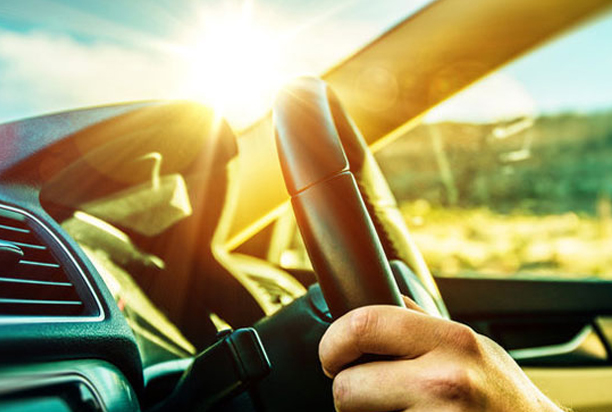Most people are pretty aware of the challenges that come along with driving in wet weather but did you know that summer brings its own series of obstacles for drivers – from sun glare to overheated engines, we’ve put together some information on what to look out for and how to prepare yourself for driving in hot weather.
Before you leave the house
- Check traffic reports and try and time your trip to avoid conjestion
- Plan your trip and factor in breaks at least every two hours – the heat can really make you sleepy and regular breaks will give you a chance to keep an eye on your car and tyres and give them a chance to cool down too.
- Allow extra travel time. Don’t put yourself in a position where you’re pushing to get to your destination. It will help reduce stress levels and make your journey more enjoyable.
- Check any medications to make sure you’re OK to be driving. Hayfever can be a dangerous thing when driving – impromptu sneezing can impare your vision and cause you to veer off-track so you want to minimise the symptoms – give your car a good vacuum to pick up any dust particles and ensure that if you are taking antihistamines, they are the non-drowsy kind and don’t contain warnings against driving or operating heavy machinery.
Make sure your vehicle is up to the task
We recommend a professional check up of your vehicle before heading off for a long trip but here are a few things you can keep a regular eye on to make sure your vehicle will handle the hot weather.
- Check your tyres for wear, cuts and punctures. Make sure they have the correct air pressure and top up if needed. Check out our article on how to avoid a summer tyre blowout. Check your spare and don’t forget the tyres on any vehicle you may be towing.
- Check your wipers. Don’t let the hot weather fool you – sudden rainstorms happen all throughout summer. Make sure your windscreen wipers are in good condition and replace them if necessary. The wipers should glide across the windscreen moving all the water and dirt along with them. Uneven streaking, splitting, scratching or skipping across the windscreen might tell you that your wipers need replacing.
- Clean your windscreen. Give your windscreen a good clean to remove bugs and dirt. Make sure your windscreen washer bottle is filled up with a mix of water and detergent. A buildup on your windscreen can make it really hard to see – especially in a sun glare so keep a regular eye on it throughout your trip.
- Make sure all your engine fluids levels are up (oils, coolants, etc)
- Check the aircon to make sure you’re not distracted by discomfort. Watch out for leaks or weird noises which might tell you it needs fixing.
- Check out our vehicle driveway health check for more information
On the road – driving in hot weather
- Put your game face on: Keep fully focussed on the task at hand – eyes, ears and mind on the road. More people are out and about enjoying then sunshine but sunglares can make pedestrians, cyclists and motorbikes particularly hard to see so be on the lookout and slow down in built up areas.
- Keep an eye on your speed: The faster you go, the more heat you’re adding to your tyres.
- Pack the right tools for the job: Dehydration can set in quickly under the hot sun, so stay hydrated by drinking plenty of water. Keep extra water in the vehicle for drinking and emergency overheating. Don’t forget to pack your sunglasses and have them within reach.
- Watch the road: Tarmac can become sticky and loosen particles in the road or melt the road surface. This can cause holes that damage tyres or loose rocks which can crack windscreens and scratch paintwork. Pay attention to any temporary speed limits, keep a good distance between you and the car in front and have any windscreen chips, no matter how small, examined by a professional as soon as you get a chance.
- Give notice and leave space: There may be extra traffic on the road so brake gently and earlier than you normally would to give the driver behind you plenty of notice that you’re slowing. Flick those blinkers on nice and early if you’re planning a lane change and don’t forget to leave a 3 second gap between you and the car in front.
- Watch out for overheating: While driving, keep an eye on your temperature gauge. If it creeps up, you may need to pull over in a safe shaded area and check the fluid levels. Pop the hood from inside the car and let the engine cool for at least 30 minutes before touching anything. If the temperature gauge continues to rise, it’s time to call a tow truck to avoid further damage to your engine.
- Know when mother nature has got you beat: If the sun is glaring and you can’t see clearly, it’s time to pull over and wait it out. Look for a rest area off the road.
Remember, it’s about the journey, not the destination. Take your time and make sure both you and your vehicle are up to the task.
Image by master1305 on Freepik



